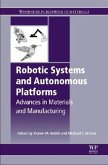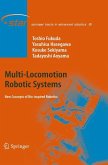Recently jumping robots take a trend in the locomotion research track. One of these jumping robots what so called the baton robot. Baton mechanism is consist of two masses connected by a rod. This interesting mechanism take place in the recent research starting from studying this mechanism passively moving to make it active mechanism using different impulsive techniques. In this thesis, a part of the baton robot will be studied and discussed in details. First starting with the two degrees of freedom (2 DOF) model moving to the three degrees of freedom (3 DOF) model. Also two different types of controllers will be tested on it. The two controllers are classical PID controller and a nonlinear controller which is sliding mode control (SMC). Another thing that will be taken into consideration is the effect of sensing element on the control techniques that will be used to control the robot. These two sensors are the typical shaft encoder which represent the inertial actuation approach(IAA) and the new proposed optical sensor based on whispering gallery mode (WGM) which represent the optical actuation approach (OAA).
Bitte wählen Sie Ihr Anliegen aus.
Rechnungen
Retourenschein anfordern
Bestellstatus
Storno








